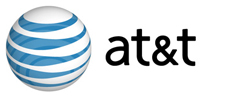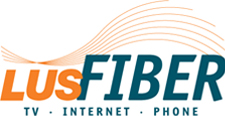August 17, 2009 12:15 PM
Why Aren't We Talking More About Price Per Mbps?
Bridging the gap between the hot topics of broadband availability and adoption is that of affordability. Advocates across the spectrum of opinions point to the need to not just have broadband that's available but also that's affordable, and that a key factor to driving adoption is cost.
But unfortunately, most of the conversations surrounding affordability only deal with the overall cost of service, which skews this discussion in a couple of ways.
For one, those that want to prioritize realistic goals over aspirational ones cite affordability as a key reason not to strive for America to take a quantum leap in its broadband capacity. They say that we shouldn't set goals like a 100Mbps Nation if it means mandating services be offered that aren't affordable for consumers. While I agree with this sentiment in general, I don't think we should discount the possibility that people are willing to pay for top-shelf service plus it doesn't do anything to address how we can enable a world where 100Mbps and beyond can be affordable, which is what I'm focused on.
Secondly, I don't think we can solve the adoption problem by just looking at how much broadband costs without any acknowledgment of how much service is delivered for that price. I have a hard time blaming someone in rural America who's unwilling to spend $50+ a month to get "broadband" that's less than 1Mbps. And I don't necessarily think that means that person is unwilling to spend $50+ if they got a bigger bang for their buck.
Put simply, I think it's impossible to identify consumer motivations about what's affordable by only looking at price. We also need to be taking into account what they're getting for what they're paying as consumers are often driven as much by value, perceived or actual, as the overall dollar amount.
That's why I think it's time we start focusing more of the debate over affordability on the metric of price per Mbps.
Let's consider a simple example: one rural community only has a 50% penetration rate, whereas one suburban community has an 80% uptake. In both communities you can buy broadband for $50 a month. So does this mean that rural users can't afford or aren't willing to pay the same as their suburban counterparts? Well let's take this a step further. In the suburban community they're getting 10Mbps for their $50, whereas the rural town only gets 1.5Mbps for their $50. Couldn't that disparity have an impact on adoption rates?
Beyond just divining what's holding some back from getting online, the price paid per Mbps is vitally important to the health and future outlook of our digital economy.
In this way we can think about bandwidth relative to the digital economy the same as electricity was to the industrial economy. In the 20th century, whoever had access to the cheapest electricity had the greatest opportunities to harness its power to innovate and drive new efficiencies. Having access to the cheapest bandwidth will have the same kind of impact on countries striving to be economic leaders in the 21st century.
But we should add some nuance here as the point again isn't just about getting the cheapest service. What good is an electric grid that can sell service at $1 a month but only deliver power an hour a day, or in an unreliable manner, or with a quota that if exceeded triggers huge overage fees? What's really needed is an electrical grid that can deliver the cheapest price per watt, just like broadband needs to be about the cheapest price per Mbps, not the cheapest overall cost of service.
Looking at affordability through this perspective also helps with better understanding the pros and cons of various broadband technologies. While some technologies may be cheaper to deploy, they invariably deliver less capacity and yet they don't necessarily charge less for service. On the other hand, other technologies cost more to deploy but they deliver a lot more capacity for what they charge.
For a great visualization of this, check out the graphs in this article.
The first shows the average price per Mbps of bandwidth on DSL, cable, and fiber networks. While DSL has been dropping, it's still at $15 per Mbps. Cable's holding steady at a bit over 5Mbps. And fiber's in the clear lead at about $1 per Mbps.
The second graph then shows the average speeds of these technologies, with DSL at about 5Mbps, cable at about 12Mbps, and fiber up over 60Mbps.
Now let's take this a step further and multiply the average cost per Mbps vs. the average capacity:
DSL - $15 per Mbps x 5Mbps = $75/month
Cable - $5 per Mbps x 12Mbps = $60/month
Fiber - $1 per Mbps x 60Mbps = $60/month
Notice how despite fiber offering at least five times more bandwidth than the second best technology it's able to do so for roughly the same cost to consumers.
So what this is all showing us is that by looking at the issue of affordability based on price per Mbps and how much service consumers are actually getting we can begin to get a more granular understanding of how much value service providers are delivering.
By going beyond just looking at the overall cost of service, we can start to see how even though laying new broadband infrastructure like fiber may be more expensive to deploy than simply upgrading existing cable or telephone lines, the end result of doing so is that consumers get a whole lot more bandwidth for their buck.
And given the overarching importance of cheap bandwidth to enabling the establishment and growth of our digital economy, we need to make sure we're not making shortsighted decisions based on skewed perceptions of things like affordability that don't take all of the facts into account.
America needs as much bandwidth at as low a cost as we can possibly manage. But to fully understand the issue of affordability, we need to look beyond the overall cost of service and start considering the price per Mbps of broadband.




